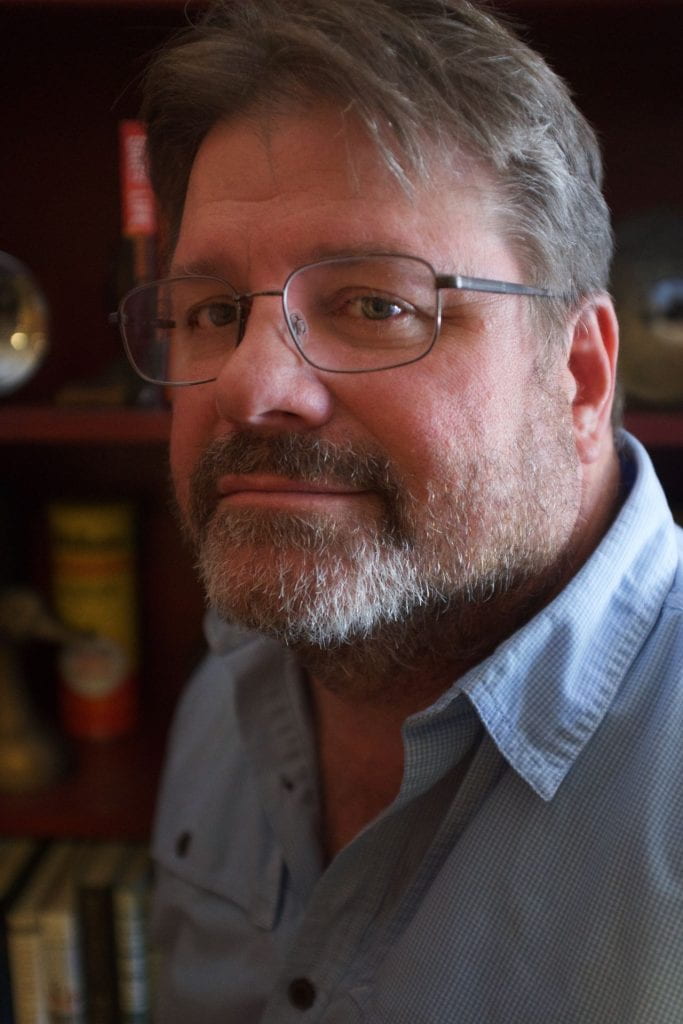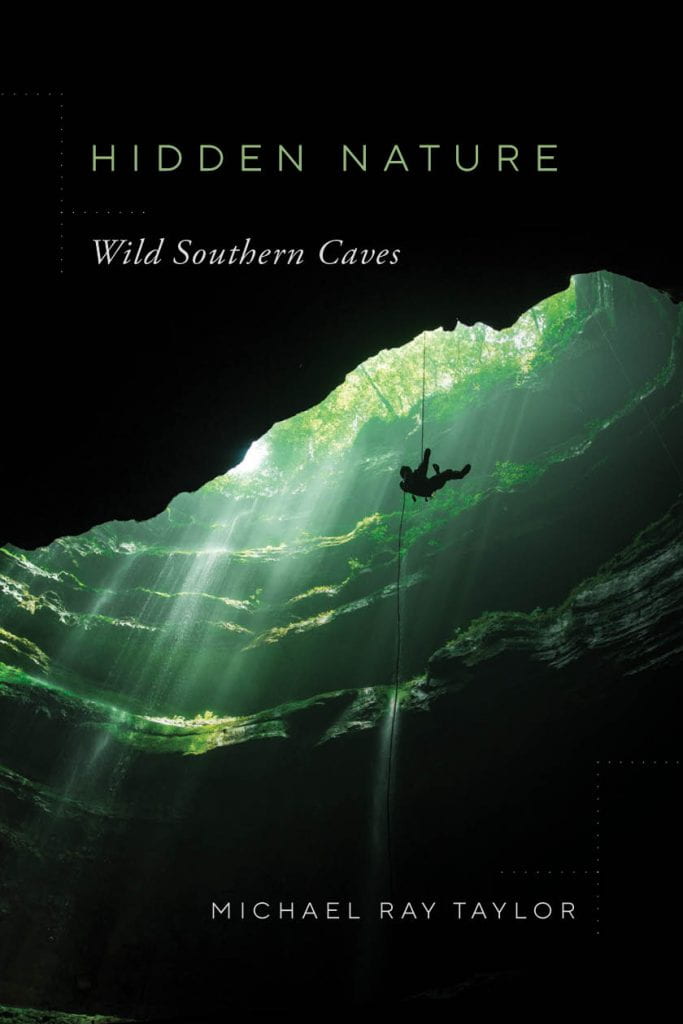Michael Ray Taylor, one of our M.F.A. alumni who specializes in nonfiction writing, is a Professor of Communication at Henderson State University in Arkadelphia. He teaches courses on journalism and new media, has published numerous books and countless articles (in Sports Illustrated, The New York Times, Wired, and elsewhere), and has contributed to multiple documentary films. He is a big fan of caves, and when he is not exploring them, he might very well be writing about them, as he’s done in Hidden Nature: Wild Southern Caves, which was released last year. Below, in our interview with Taylor, we ask him about his latest book, his time in the M.F.A. program, his favorite cave in Arkansas, and more.
You earned your M.F.A., specializing in nonfiction writing, in 1996. Could you share a memory from your graduate school experience on the University of Arkansas campus and, specifically, your time in the Creative Writing program?
There were many great experiences—not only with teachers like Jim Whitehead, Skip Hays, Bill Harrison, and Miller Williams, etc., but also with fellow writers in the program like Gordon Grice, Tom Franklin, and Beth Ann Fennelly. But I guess my favorite experience was an independent study I took one summer from Jim Whitehead. I taught full-time at Henderson while working on my M.F.A. as terminal degree, so I tried to cram as many hours as possible into summer classes. One session I had two regular classes each day, with the independent study starting on Whitehead’s patio at 4 p.m. Over a pitcher of cool drinks we would discuss the latest thing I had written, the latest thing he had written, and one or two things we had read. Sometimes I would stay for dinner with his wife and family, and once I cooked for them. It was more like a friendly visit than a class, but I learned plenty about the writing life.
What originally drew you to nonfiction as your area of specialization?
Before attending the U of A, I earned an M.A. in English with a creative writing emphasis at the University of South Carolina, where my major professors were James Dickey and William Price Fox. While there I wrote a couple of short stories for small journals that paid in free copies. As editor of a student magazine, by chance I attended a daylong presentation on magazine writing, emceed by journalism professor—and legendary editor—William Emerson, Jr. He was such an interesting, larger-than-life character that I enrolled in his J-school nonfiction class. Before long I had sold two class assignments to national magazines for actual money. I was hooked.
In addition to being a professor and the author of six books, you’re a prolific journalist, writing on topics from caves to bourbon country, interviewing everyone from John Prine to Fiona Ritchie, and getting interviewed by Terry Gross (of NPR’s Fresh Air). What has been one of your favorite articles to write, or one of your favorite interviews to conduct, and why?
My favorite article was also my hardest, a Sports Illustrated piece on the death of legendary cave diver Sheck Exley in 1994. I had gone with him to Mexico to report on a world scuba depth record and was present when he died trying for it. His life and the dangerous pursuit that killed him led to a piece ultimately collected in several books. My favorite interview was with John Irving, a writer I’ve always admired.
Your latest book is Hidden Nature: Wild Southern Caves, published by Vanderbilt University Press last August. Why have you felt compelled not merely to go into caves but also to write about those experiences? And how would you describe the style of writing you use to convey those experiences to readers?
Good nonfiction should always pull readers into a strange new world. That’s something I learned at the U of A. Writing about caves and discoveries underground allows me to do that in a very literal sense. I strive for the immersive narrative style of writers like John McPhee, Jon Krakauer and Susan Orlean. Once in a great while, I think I manage to hit it.
What is your favorite cave to explore in Arkansas?
A wild cave called Fitton, in the Ozarks not far from the failed Dogpatch amusement park. It’s one of the state’s longest and prettiest.
What is your favorite Hollywood movie about caving? (I’m assuming The Descent is probably not your answer, though I’d be interested to know what you thought of that one. 🙂 ) What is your favorite documentary film about caving?
I actually saw the U.S. premier of the The Descent, which they arranged to show inside a cave in a Texas State Park. I enjoy watching and making fun of bad horror movies set in caves, even when the characters use ice axes (which no one would ever take into a limestone cave) to kill subterranean vampires. The best documentary about caves was an IMAX film, Journey Into Amazing Caves. I may be biased in this choice, however, because I assisted at a couple of filming locations and also wrote a companion book for National Geographic.
How has writing about so many topics of personal interest informed the way that you teach your students as a Professor of Communication at Henderson State University?
It’s the essence of my teaching. People write their best when they are passionate about their subject. From my own experience, I teach students to find subjects of passion for their own writing, filmmaking, and digital storytelling. Many of them have gone on to careers where they are able to do exactly that.


